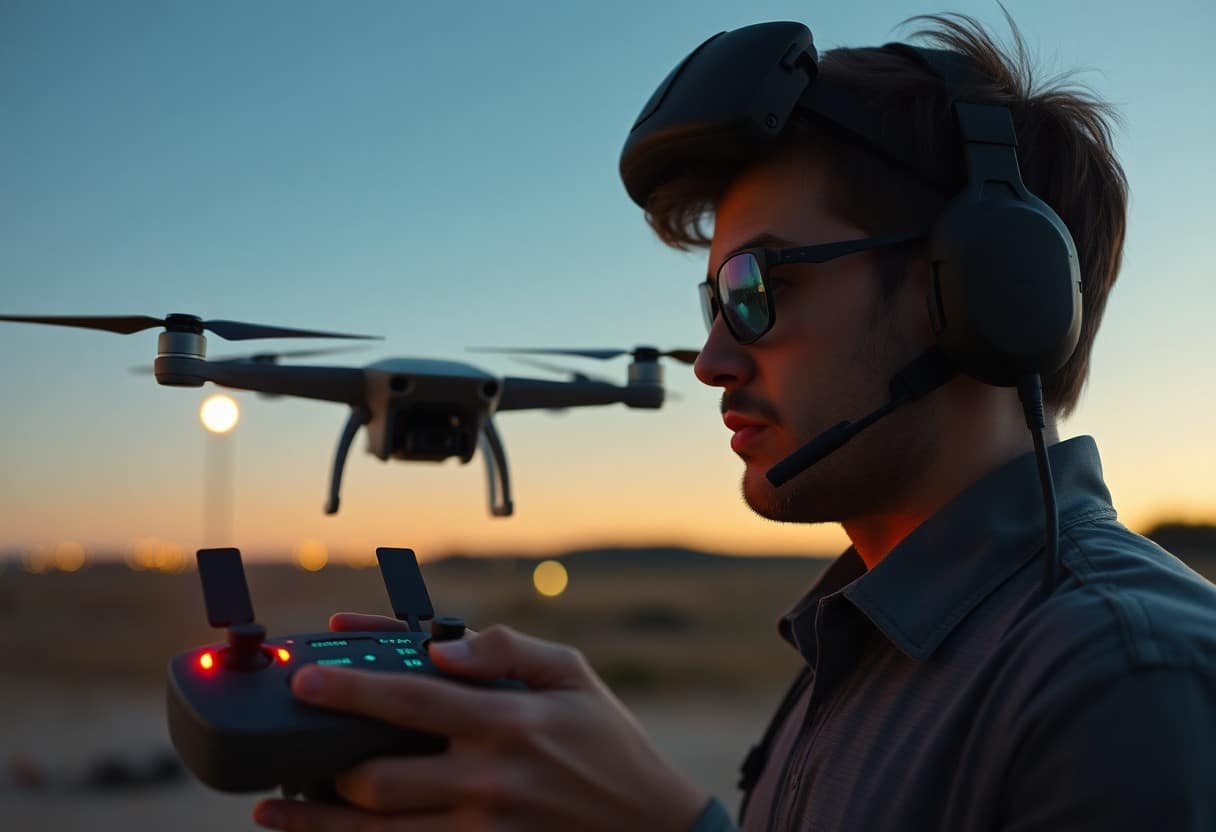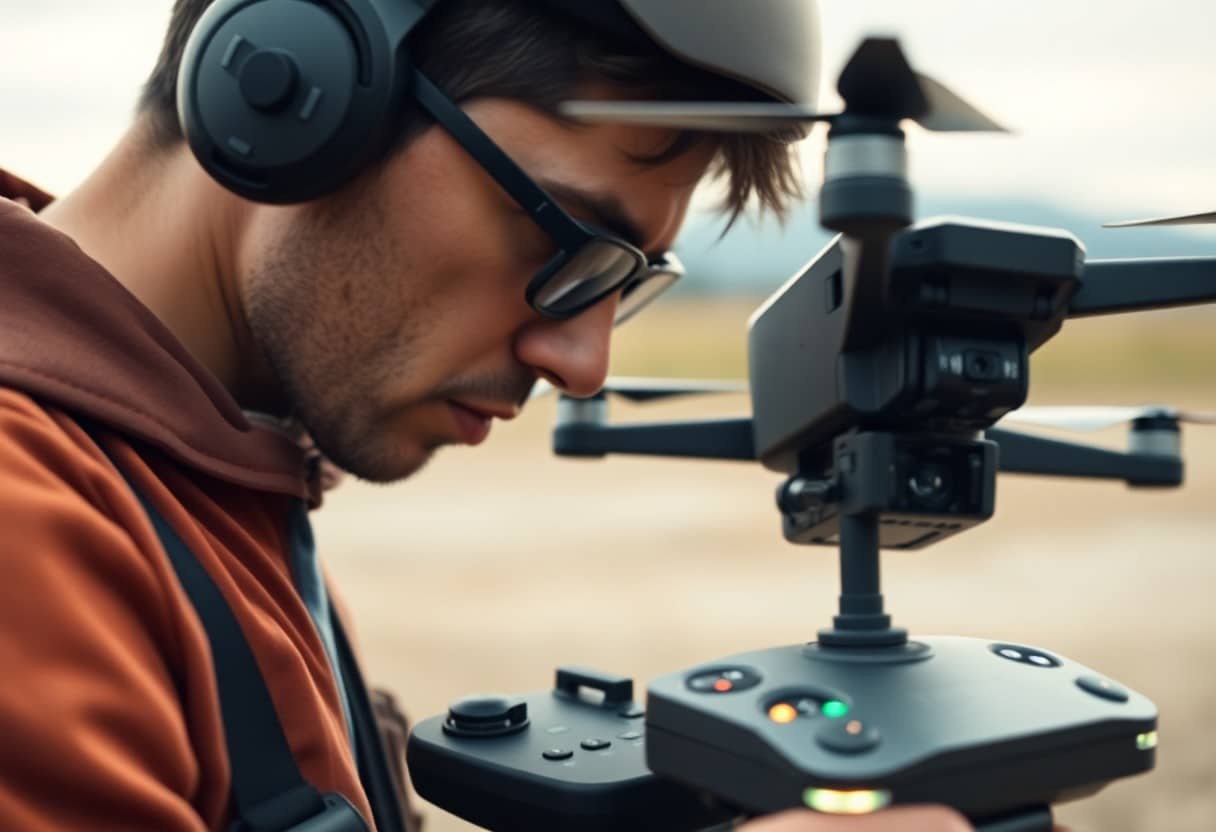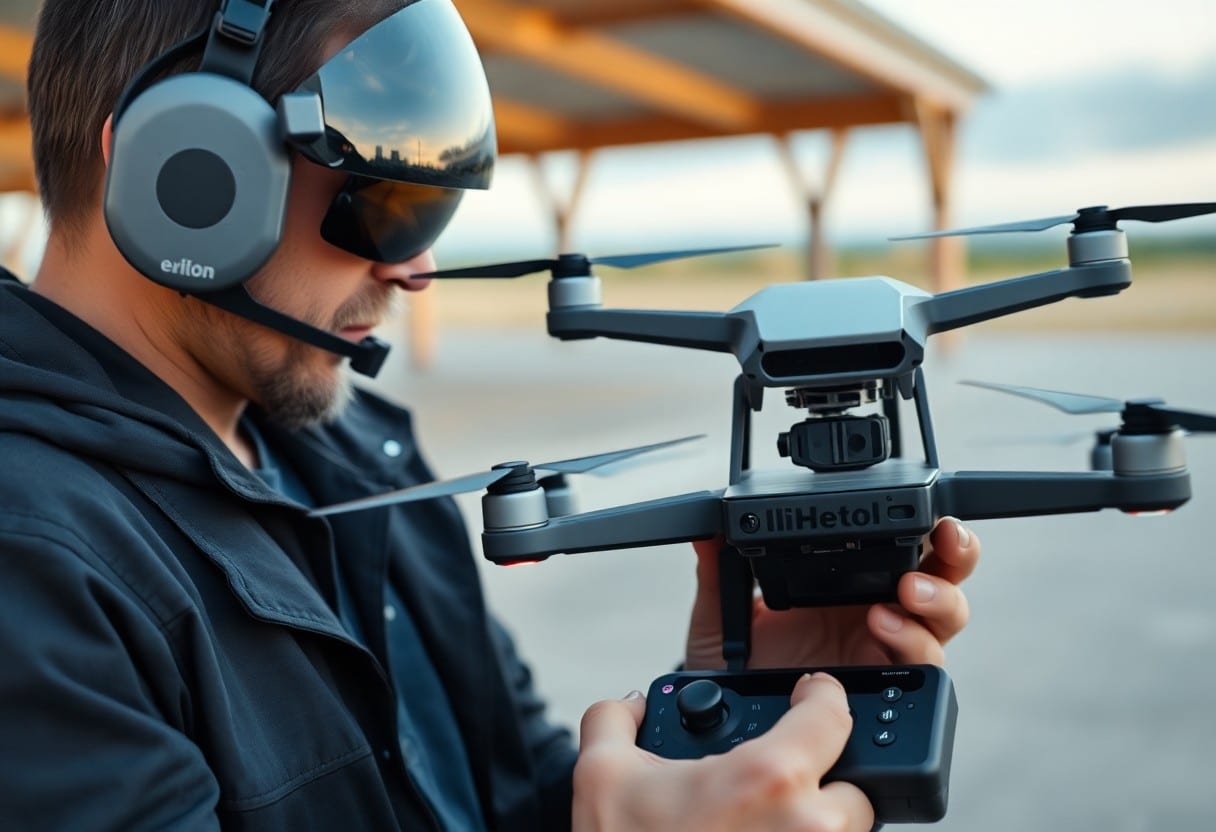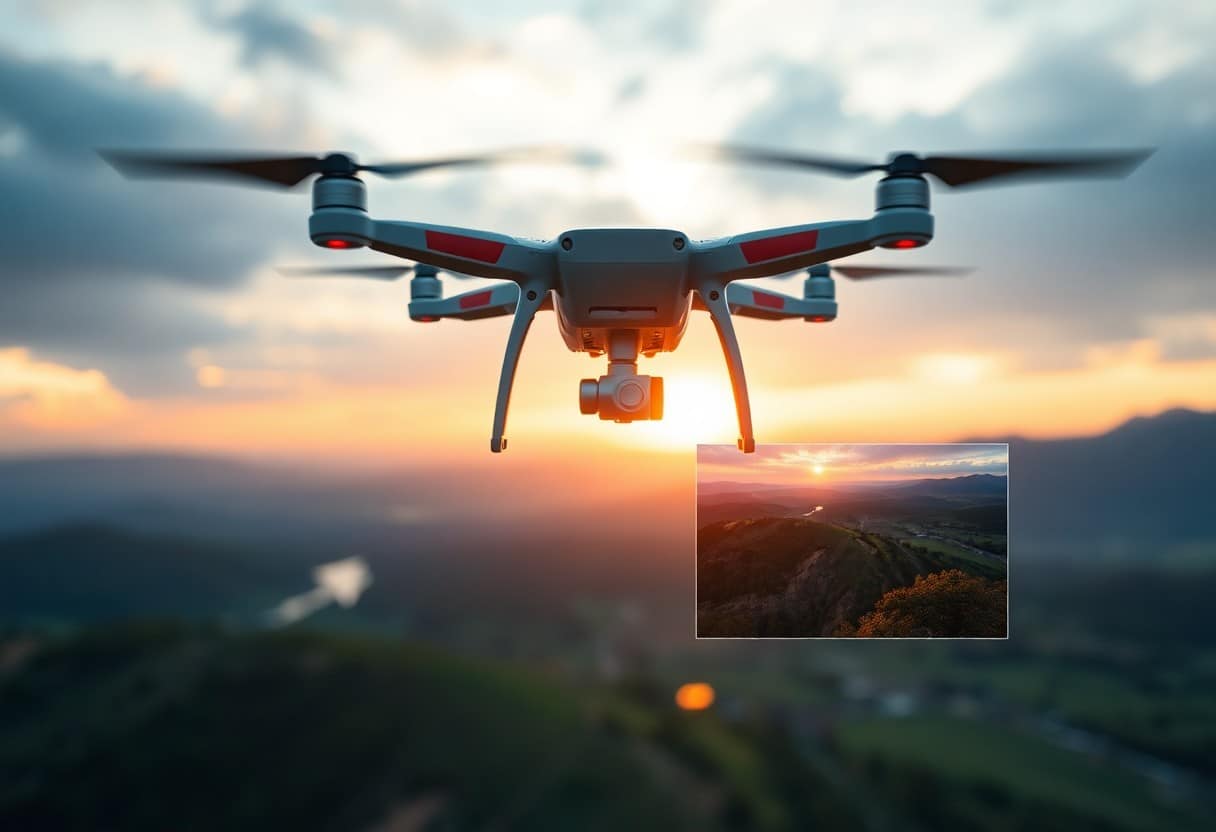What basic drone controls should every new pilot be familiar with?
As a novice drone pilot, understanding theBasic Drone Control ElementsIt's critical to ensure your safety and success. Whether you're a hobbyist or a professional controller, it's important to understand the importance ofDirectional control, takeoff and landingAll of the basic maneuvers can help you perform in the air.Precise operation. In this article, you'll gain insight into the must-have drone controls that will make your flying experience smoother and safer.

Key Points:
- control lever: Learn how to use the joystick to control the takeoff, landing, and steering of a drone.
- GPS positioning: Understand how GPS works and how it can be used to keep a drone stable in flight.
- Battery Management: Familiarize yourself with the type and duration of the drone's batteries to avoid accidents caused by insufficient power.
- Flying Mode: Master the different flight modes, such as "Stable Mode" and "Manual Mode", for use in different situations.
- Return function: Learn how to set up and use the auto-return feature to increase flight safety.
- Camera and Recording Controls: Familiarize yourself with the drone's camera and recording capabilities and learn how to take high-quality images.
- Obstacle Sensing: Understand the sensory systems of drones and learn how to utilize them to avoid collisions.

Understanding Drone Control Systems
Before learning how to operate a drone, you must first understand the control system of the drone. A drone usually consists of a complex set of hardware and software that allows for both manual and automatic operation. Knowing how these controls work will not only help you fly safely, but will also improve your maneuvering skills and make you a more proficient pilot.
Manual and automatic control
In drone operation, you can choose between manual or automatic control mode. Manual control allows you to have complete control over the operation of the drone, while automatic control operates automatically through a preset program. It is important to understand the advantages and disadvantages of both modes in order to make the right choice for different flight requirements and environments.
The importance of controlling sensitivity
Control sensitivity refers to how quickly the controller responds to commands as you maneuver the drone. Proper control sensitivity settings can affect flight stability and safety.Too much or too little sensitivity can lead to operational difficulties and even flight accidents.Therefore, you must adjust your sensitivity to ensure the best possible flying experience.
Adjustments in control sensitivity not only affect the immediate response of the drone, but also change flight stability.If the sensitivity setting is too high, you may lose control of the drone, causing drifting or unexpected maneuvers; on the other hand, too low a sensitivity setting may prevent you from performing delicate maneuvers effectively. Ensuring that the sensitivity setting meets your operating habits and environmental needs will greatly enhance flight safety and control convenience.
Basic Flight Control
As a novice drone pilot, familiarize yourself with theBasic Flight ControlThey are the key to safe and efficient flight. Mastering these controls will not only improve your flying skills, but will also help you make good decisions in the air. Whether you're spinning, lifting or moving direction, these basic controls are the foundation of your drone.
Throttle and altitude control
The throttle control is the heart of the drone, you need to keep the throttle closed all the time to keep theHeight of stabilization. By adjusting the throttle, you can easily go up or down. Remember, adjusting the throttle too quickly or too slowly can result inunstableIt is therefore necessary to proceed with caution.
Yaw, pitch and roll
Yaw, Pitch and Roll are a set of key commands that control the direction of the drone. With yaw, you can performLeft/Right SteeringPitch controls forward and backward tilt, while Roll allows the drone to rotate on the vertical axis. The combination of these controls allows you to precisely maneuver the drone's flight path.
When operating a drone, it is important to understandYaw, pitch and rollHow they interact with each other is critical. For example, when you operate the yaw, it also affects the pitch angle, which may cause the drone to become unstable. Therefore, thorough practice and simulation before you fly so that you have a good understanding of these controls can help you in theHazard reduction in practiceThe first thing you need to do is to enjoy the fun of flying a drone in a safer way.
Navigation and Control
While flying a drone.Navigation and ControlIt's a basic skill you need to familiarize yourself with. You need to know how to fly accurately by utilizing the attitude and direction of the drone. Understanding the various maneuvering functions and different flight modes can help you maintain smooth flight and ensure safe operation in specific environments.
GPS and Waypoint Navigation
Learn to useGPSand waypoint navigation are critical to drone flight. This technology not only provides accurate geographic location, but also allows you to set specific waypoints for more precise flights. With GPS, you can easily plot your course and minimize the risk of accidental deviations.
Emergency Controls
realizeEmergency ControlsThe tips in this section will greatly enhance your safety awareness. When faced with strong winds, depleted batteries or other unexpected situations, reacting quickly and correctly is key. Familiarizing yourself with these emergency measures can help you avoid crashing or causing harm to your surroundings.
in progressEmergency ControlsYou should familiarize yourself with the drone's operating system in advance. Emergency brakes, the return-to-flight function, and the use of manual controls are some of the things you should focus on. Ensuring that you do your homework before a real emergency will greatly improve your drone's maneuverability and ensure your safety and the integrity of your equipment.

Communication and Connectivity
While maneuvering the drone.Communicationsrespond in singingConnectivityIt's important. This not only affects flight stability, but also your ability to control the drone. Knowing how to communicate effectively with the drone and maintain signal stability is especially important for novice pilots. More information can be found inHow to prepare for the drone authorization process?The
Remote Control Type
Choose the right oneRemote ControlIt is the first step in unmanned operation. The following are common types of remote controls:
- ProfessionalRemote Control
- EconomyRemote Control
- Smartphonecontainment
- Tablet PCcontainment
- Simulatorcontainment
Assuming you have chosen the right remote control, this will enhance the efficiency of your operation.
Maintaining Signal Integrity
Maintenancesignal integrityIt is the key to ensure the stability of the drone's flight. Signal interference may lead to unstable flight or even loss of control, so the use of high-qualityrefractionand the localizer are of paramount importance. You can greatly reduce the risk of an accident by regularly checking your signal source and avoiding flying in a clogged environment.
Make sure your drone is ininterference-freeA decrease in signal strength may result in a loss of control of the drone, thereby increasing the risk of A decrease in signal strength could result in a loss of control of the drone, which could increase theDangerous. Using a navigational map can help you avoid high-voltage power lines and other sources of interference, achieving betterSignal MaintenanceEffect. I believe you can master these elements to further improve the safety of your drone's operation.
Pre-flight inspection.
Before flying a drone.It's important to do a pre-flight check.This not only ensures your safety, but also helps you understand the condition and performance of your equipment. This not only ensures your safety, but also helps you understand the condition and performance of your equipment. It is recommended to refer to this article Change Your Lens - 8 Steps to Cinema Drone PhotographyFor more comprehensive information, click here.
Equipment Inspection
Before each flight, you should thoroughly inspect the drone.Equipment InspectionThis includes checking that the propeller is in good condition and that the battery is fully charged. This includes checking that the propellers are in good condition, that the batteries are fully charged, and that all connections and sensors are functioning properly. Ensure that all parts of the drone are in optimal condition to avoid any accidents.
Software and Firmware Updates
Maintain your drone software and firmwareTimely Updatesare very important, not only to improve performance, but also to enhance security. These updates usually contain fixes for known issues as well as new features that can help you maneuver your drone better.
While ensuring the safety and performance of theRegular inspection and installationKeeping up-to-date with the latest software and firmware updates is one of the best practices for drone operation. This helps protect your device from potential security breaches or technical issues and ensures that you can take full advantage of all the features. Don't overlook updates, as they often resolve issues from previous versions and provide an enhanced user experience.
Security Agreements
As a novice drone pilot, it is important to understand and follow theSecurity Agreementsis extremely important. Make sure your drone equipment is complete and familiarize yourself with all the guidelines in the operator's manual so you can stay safe while flying. UnderstandingHow Pre-Flight Inspections Improve Compliance with Drone RegulationsIt also helps to minimize potential risks.
Understanding the No Fly Zone
Before operating a drone, you must have a good understanding of theNo Fly ZoneWe have a clear understanding of these areas. These areas usually include airports, military bases and other sensitive areas, where flying a drone may violate the law or even cause danger.
Recommended Safety Practices
comply withRecommended Safety PracticesThis is the key to a safe flight. You should check the weather and surroundings before you fly to make sure there are no distractions. Also, always keep the drone in your line of sight so that you can respond to any emergencies immediately.
grasp (often fig.)Recommended Safety PracticesThe risk of accidents can be significantly reduced. Before each flight, check the battery status, propeller and all equipment for proper operation. Avoid flying over crowds and follow local laws and regulations to ensure your safety and the safety of others. Regular drone safety training will also help improve your flying skills and safety awareness.
Basic Drone Controls Every Novice Pilot Should Be Familiar With
As a novice pilot, familiarizing yourself with the basic controls of the drone is essential to safe flying. You should focus on learning basic flight operations such as elevation, forward and reverse, side-to-side movement and rotation. It's also important to understand the return-to-flight function, battery management and emergency stops to ensure that you can take immediate action in the event of a problem. Mastering these basic controls will increase your confidence and safety while flying your drone.
Frequently Asked Questions
Q: What basic controls should a new drone pilot be familiar with?
A: Basic controls that a novice should understand include throttle, rudder, elevator control, roll, tilt control, and gyroscope applications. These controls are the foundation of drone flight and help the pilot maneuver the drone safely and accurately.
Q: What is the throttle control of a drone?
A: The throttle control is used to regulate the vertical height of the drone. Pulling up the throttle will raise the drone and lowering the throttle will lower it. Mastering the throttle control is the key to a good flight.
Q: What is a rudder and what does it do?
A: Rudder is an important control to control the lateral movement of the drone, which is mainly used to change the flying direction of the drone. Being familiar with the operation of the rudder can help the pilot to make steering and orientation adjustments during flight.
Q: What is the difference between elevation control and tilt control?
A: Elevation control is mainly used to adjust the altitude of the UAV, while tilt control is used to adjust the forward or backward angle of the UAV. Together, these two controls can effectively change the flight path and attitude of the drone.
Q: What is the role of gyroscope in a drone?
A: Gyroscope is an important device for stabilizing the flight attitude of the drone. It can monitor the rotation and tilt of the drone in real time and make adjustments automatically. For novice pilots, understanding the function of gyroscope will help to increase the stability of flight.
Q: How do I familiarize myself with these basic controls?
A: Beginners can practice with the simulator or fly in a safe environment. Observe and adjust the controls during the flight and gradually master the use of the controls.
Q: Are there recommended exercises to improve control?
A: It is recommended to start with simple flights, such as low-level straight flights and simple turns, and then gradually increase the level of difficulty by practicing more difficult skills such as hovering and circling. Continued practice and reflection will significantly improve your control.




